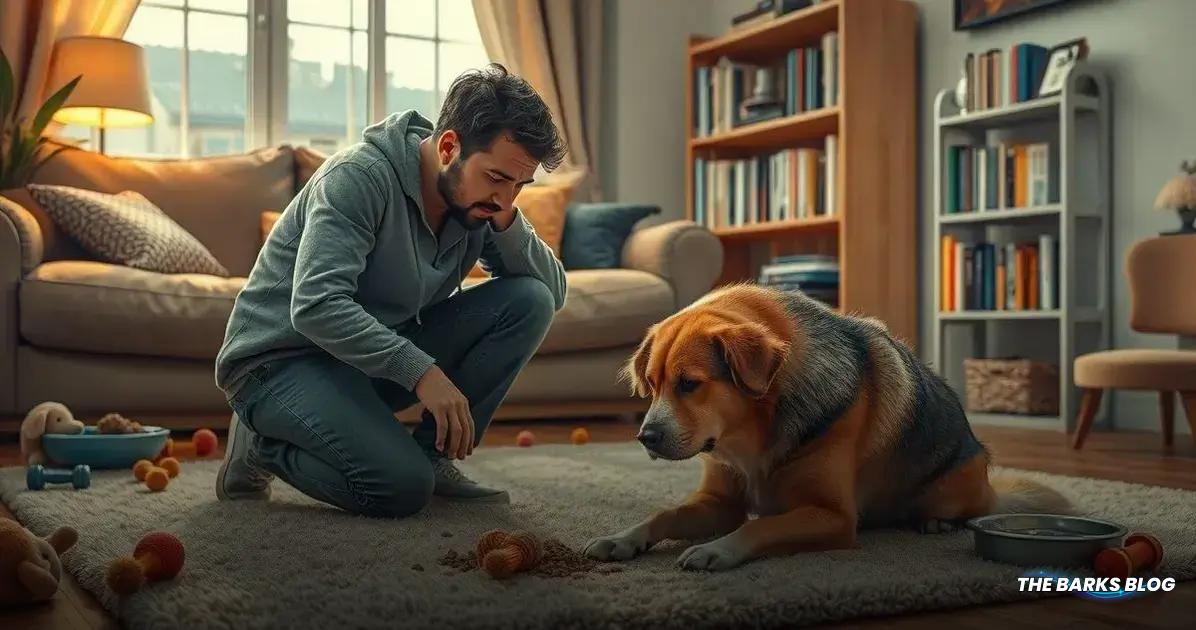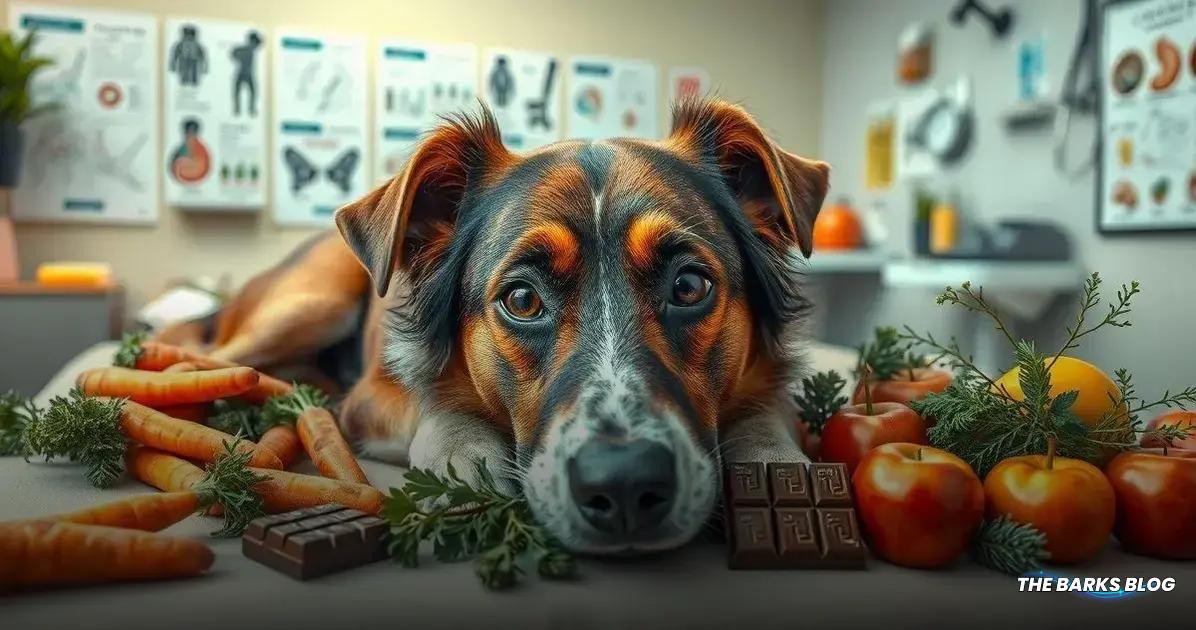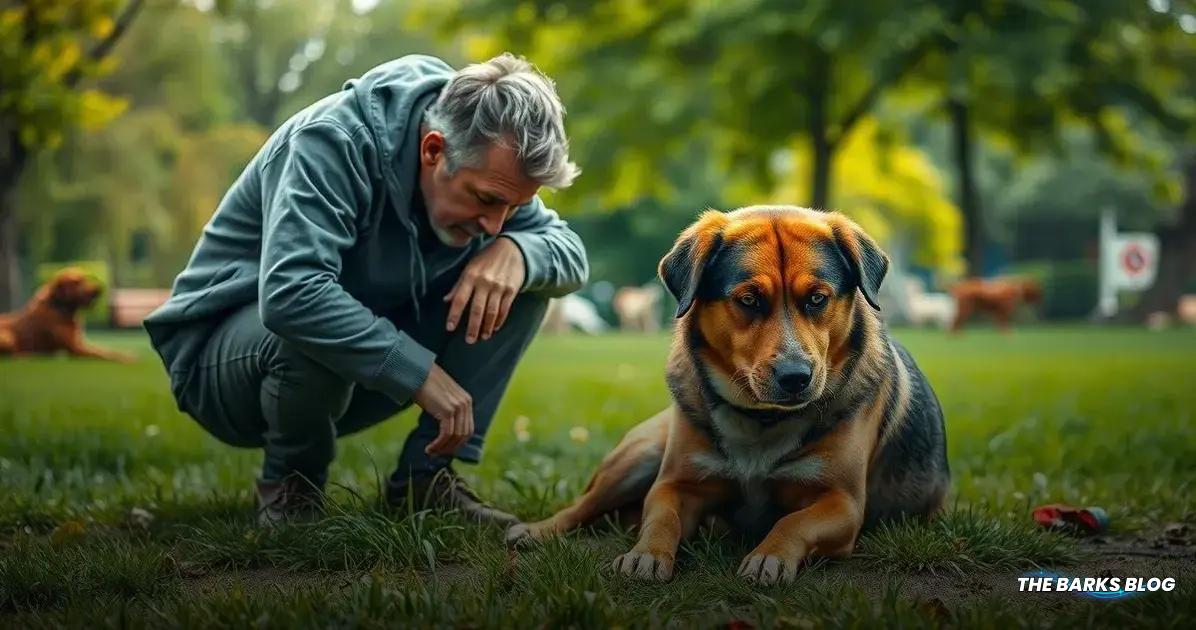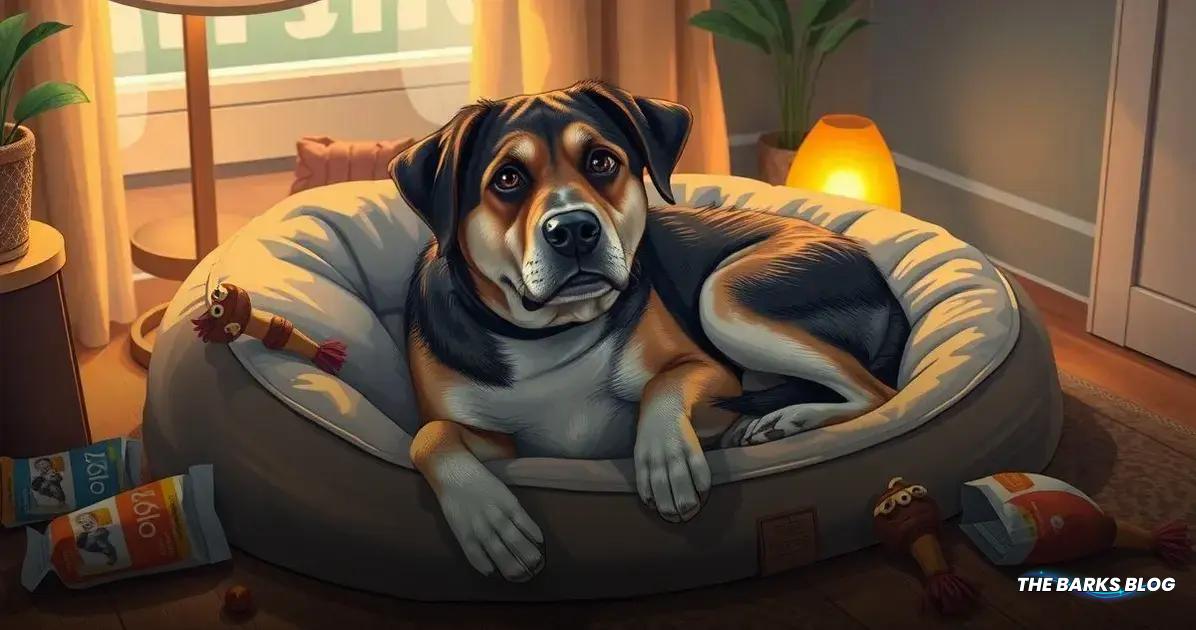Understanding your dog’s vomiting is essential for their health, as different colors of vomit can indicate various issues, from minor stomach upset to serious conditions. Frequent vomiting, especially with blood or other symptoms like lethargy and diarrhea, requires immediate veterinary attention. Preventive measures such as a balanced diet and monitoring for toxic substances can help reduce the risk of gastritis. Always consult your veterinarian if you notice changes in your dog’s behavior or health.
Dogs vomit sometimes, and it could just be down to eating something their stomach doesn’t agree with, and it passes as quickly as it comes. Or, it could be down to something far more serious…

Understanding Dog Vomit
Understanding why dogs vomit is crucial for any pet owner. Vomiting can be a common occurrence in dogs, often triggered by something as simple as eating too quickly or consuming something that doesn’t agree with their stomach. However, it can also be a symptom of more serious health issues.
When your dog vomits, it’s important to observe the frequency and the characteristics of the vomit. Is it a one-off incident, or are they vomiting repeatedly? The color and consistency of the vomit can provide vital clues as to what might be wrong. For instance, clear vomit might indicate a simple stomach upset, while vomit that contains blood or has a particularly unusual color could be a sign of a more severe condition.
Additionally, consider your dog’s recent activities. Have they been rummaging through the trash, eating grass, or playing outside where they might have ingested something harmful? Keeping a close eye on your dog’s behavior and habits can help you identify the cause of their vomiting.
If your dog vomits occasionally but seems otherwise healthy, it may just be a minor issue. However, if the vomiting persists or is accompanied by other symptoms like lethargy, diarrhea, or signs of pain, it’s essential to consult your veterinarian promptly.
In summary, understanding dog vomit involves not just recognizing the act itself but also paying attention to the context around it. This awareness can help you determine whether it’s something trivial or a signal that your furry friend needs medical attention.

Types of Dog Vomit
When it comes to dog vomit, the type can provide significant insight into what might be happening with your pup’s health. Here’s a breakdown of the various types of dog vomit and what they could indicate:
Black Dog Vomit
Black vomit can be alarming, but it’s often a result of your dog consuming mud or dirt while playing outside. If this happens just once and your dog seems fine, there’s usually no cause for concern. However, if the vomit resembles coffee grounds, it could indicate bleeding in the stomach or intestines, necessitating immediate veterinary attention.
White Dog Vomit
White vomit typically occurs when a dog has eaten grass, which they often do to induce vomiting. If the vomit is mostly bile and your dog hasn’t eaten in a while, it’s generally not a serious issue. However, if your dog is producing white foam, this may indicate a gastrointestinal problem that requires urgent veterinary care.
Red Dog Vomit
Red vomit is concerning, as it usually indicates the presence of blood. Fresh, bright red vomit may suggest inflammation or a problem with the stomach lining, while dark red vomit could signal a stomach ulcer. In any case, if you notice red vomit, contact your veterinarian immediately.
Green Dog Vomit
Green vomit often means that your dog has eaten too much grass or is vomiting bile. If this happens occasionally and your dog appears healthy otherwise, it may not be a serious concern. However, continuous vomiting of green bile should prompt a visit to the vet.
Yellow Dog Vomit
Yellow vomit usually indicates that your dog has an empty stomach and is vomiting bile. This can happen if they haven’t eaten for a while or have eaten something that doesn’t agree with them. Again, if this is a one-time occurrence and your dog is acting normally, it may not be alarming. Persistent yellow vomiting, however, should be evaluated by a veterinarian.
Recognizing these types of vomit can help you determine the next steps to take for your dog’s health. Always err on the side of caution; if you’re ever in doubt about your dog’s well-being, consult your vet for guidance.

When to Seek Veterinary Care
Knowing when to seek veterinary care for your dog is crucial in ensuring their health and well-being. While occasional vomiting can be normal, there are specific situations where you should not hesitate to contact your veterinarian.
1. Frequent Vomiting: If your dog vomits more than once or twice in a short period, especially if it continues for over 24 hours, it’s time to seek professional help. Frequent vomiting can lead to dehydration and may indicate a serious underlying health issue.
2. Vomit with Blood: Any presence of blood in your dog’s vomit—whether it’s bright red or dark—should be treated as an emergency. This could signal severe conditions such as internal bleeding, ulcers, or poisoning.
3. Accompanying Symptoms: If your dog is experiencing other concerning symptoms alongside vomiting, such as diarrhea, lethargy, loss of appetite, or signs of pain (like whining or a hunched posture), it’s essential to get them checked out by a vet.
4. Changes in Behavior: Sudden changes in your dog’s behavior, such as increased aggression, withdrawal, or excessive panting, can indicate distress or discomfort. If these changes occur along with vomiting, don’t wait to consult a veterinarian.
5. Vomiting After Eating Something Dangerous: If you suspect your dog has ingested something toxic, like certain plants, human foods, or foreign objects, contact your vet immediately. Even if they haven’t vomited yet, it’s better to be safe and get guidance on the next steps.
6. Duration: If your dog has been vomiting for more than a day, it’s a clear sign that veterinary intervention is needed. Prolonged vomiting can lead to dehydration and electrolyte imbalances, which can be dangerous.
In summary, while not every instance of vomiting requires a trip to the vet, being attentive to your dog’s overall health and behavior is key. When in doubt, it’s always best to err on the side of caution and consult your veterinarian for advice. Your furry friend’s health is worth it!

Symptoms of Gastritis
Gastritis in dogs is an inflammation of the stomach lining that can cause a range of symptoms. Recognizing these symptoms early is crucial for effective treatment. Here are the key signs to watch for:
1. Frequent Vomiting:
The most obvious symptom of gastritis is frequent vomiting. This may occur with or without the presence of food, and in some cases, it can include blood or foam. If your dog is vomiting repeatedly, it’s essential to consult your veterinarian.
2. Diarrhea:
Along with vomiting, diarrhea is a common symptom of gastritis. This can range from mild to severe and may also contain blood or mucus. Keep an eye on your dog’s stool consistency and frequency.
3. Lethargy:
A dog suffering from gastritis may appear unusually tired or lethargic. If your normally energetic pup seems to lack enthusiasm for play or walks, it could be a sign of discomfort or illness.
4. Weakness:
Weakness can manifest as difficulty standing or walking. If your dog seems unsteady or is reluctant to move, this may indicate a more serious condition that requires veterinary attention.
5. Dehydration or Excessive Thirst:
Vomiting and diarrhea can quickly lead to dehydration. Signs of dehydration include dry gums, excessive thirst, and a lack of skin elasticity. If you notice these symptoms, ensure your dog gets water and consult your vet.
6. Abdominal Pain:
Gastritis can cause significant discomfort in your dog’s abdomen. You may notice them arching their back or whining when you touch their belly. If your dog shows signs of pain, it’s important to seek veterinary care.
7. Loss of Appetite:
A sudden loss of appetite is a common symptom of gastritis. If your dog is refusing food or shows little interest in treats, this could be a sign that something is wrong.
8. Weight Loss or Anorexia:
Prolonged gastritis may lead to weight loss or anorexia, where your dog stops eating altogether. This is a serious condition that requires immediate veterinary intervention.
Recognizing these symptoms early can make a significant difference in your dog’s health. If you notice any of these signs, especially if they persist, don’t hesitate to contact your veterinarian for a thorough examination and appropriate treatment.

Preventing Gastritis in Dogs
Preventing gastritis in dogs is essential for maintaining their overall health and well-being. While it may not be possible to avoid every potential cause, there are several proactive measures you can take to help minimize the risk:
1. Maintain a Healthy Diet:
Providing your dog with a balanced diet that is rich in antioxidants and protein can help strengthen their immune system and digestive health. Avoid feeding them human food that may be high in fat or additives, as this can lead to stomach upset.
2. Control Portion Sizes:
Overfeeding can contribute to gastritis. Ensure you are feeding your dog the appropriate portion sizes based on their age, size, and activity level. Stick to a regular feeding schedule to help regulate their digestive system.
3. Avoid Sudden Dietary Changes:
When introducing new food to your dog’s diet, do so gradually. Sudden changes can upset their stomach and lead to gastritis. Mix a small amount of the new food with their current diet, gradually increasing the new food over several days.
4. Prevent Access to Toxic Substances:
Keep harmful substances out of your dog’s reach. This includes toxic plants, human foods that are harmful to dogs (like chocolate, grapes, and onions), and cleaning products. Dog-proof your home to reduce the chances of ingestion.
5. Monitor Playtime:
Supervise your dog during playtime to prevent them from eating foreign objects, such as toys or garbage. Dogs are curious creatures and may ingest things that can irritate their stomach.
6. Regular Vet Check-ups:
Routine veterinary check-ups can help catch potential health issues before they become serious. Regular wellness exams allow your vet to monitor your dog’s health and provide guidance on diet and care.
7. Hydration:
Ensure your dog has access to fresh, clean water at all times. Proper hydration is essential for digestive health and can help prevent issues like gastritis.
8. Manage Stress:
Stress can contribute to gastrointestinal issues in dogs. Create a calm environment for your pet and provide them with plenty of exercise and mental stimulation to help reduce anxiety.
By taking these preventive measures, you can help protect your dog from gastritis and ensure they lead a happy, healthy life. Always be attentive to any changes in your dog’s behavior or eating habits, as early intervention is key to preventing serious health issues.
Conclusion
Understanding the various types of dog vomit and recognizing the symptoms of gastritis can significantly impact your dog’s health.
While occasional vomiting may not be a cause for concern, it is essential to be vigilant and know when to seek veterinary care.
By implementing preventive measures, such as maintaining a healthy diet, controlling portion sizes, and monitoring your dog’s behavior, you can help minimize the risk of gastritis and other gastrointestinal issues.
Remember, your dog relies on you to keep them healthy and happy, so don’t hesitate to consult your veterinarian if you notice any troubling signs.
Your proactive approach can ensure your furry friend enjoys a long, joyful life.
FAQ – Frequently Asked Questions about Dog Vomit and Gastritis
What should I do if my dog is vomiting frequently?
If your dog is vomiting frequently, especially for more than 24 hours, it’s important to consult your veterinarian to determine the underlying cause.
What are the signs of gastritis in dogs?
Signs of gastritis in dogs include frequent vomiting, diarrhea, lethargy, weakness, dehydration, abdominal pain, loss of appetite, and weight loss.
When should I be concerned about my dog’s vomit?
You should be concerned if the vomit contains blood, if it occurs frequently, or if your dog shows other symptoms like lethargy or diarrhea.
Can I prevent my dog from getting gastritis?
Yes, you can help prevent gastritis by maintaining a healthy diet, controlling portion sizes, avoiding sudden dietary changes, and keeping harmful substances out of reach.
What is the treatment for gastritis in dogs?
Treatment for gastritis may include dietary changes, medications to reduce inflammation or nausea, and in some cases, hospitalization for severe cases.
Is it safe to make my dog vomit at home?
No, it is not safe to induce vomiting at home. If you suspect your dog has ingested something harmful, contact your veterinarian for advice.




